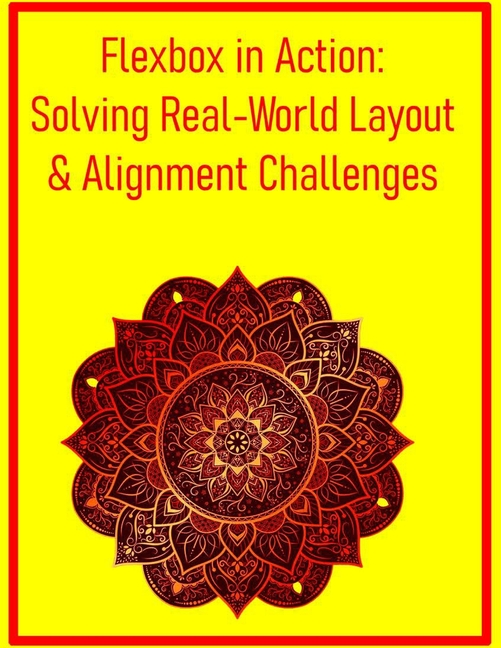Description
✅ Master the fundamentals of Flexbox, including its one-dimensional layout model, how it solves traditional layout challenges, and its role in modern CSS.
✅ Differentiate between flex containers and flex items, understanding their parent-child relationship and how the main and cross axes dictate layout flow.
✅ Implement basic Flexbox layouts by applying the display property and observing the default behavior of flex items.
✅ Control the flow direction of flex items using flex-direction to create versatile row and column-based designs.
✅ Manage multi-line flex containers with flex-wrap, enabling items to flow to new lines for grid-like structures.
✅ Utilize the flex-flow shorthand for concise control over both direction and wrapping behaviors.
✅ Align flex items along the main axis using justify-content to distribute space and position items effectively.
✅ Align flex items along the cross axis with align-items for single-line containers, ensuring consistent vertical positioning.
✅ Distribute and align multiple lines of flex items along the cross axis using align-content when wrapping is enabled.
✅ Reorder the visual display of flex items independently of their source order using the order property.
✅ Control the initial sizing of flex items with flex-basis and understand its interaction with width and height.
✅ Define how flex items grow to fill available space using flex-grow and how shrinking is managed with flex-shrink.
✅ Employ the flex shorthand property for efficient control over item growth, shrinking, and initial sizing.
✅ Override default alignment for individual flex items using align-self for precise cross-axis positioning.
✅ Implement consistent spacing between flex items using the gap, row-gap, and column-gap properties.
✅ Apply Flexbox to real-world design challenges, including perfect centering, responsive navigation, equal height columns, and the Holy Grail layout.
✅ Create flexible form layouts, distribute items evenly for button groups, and build simple Flexbox-based grid systems.
✅ Develop media objects and other common component layouts with Flexbox, handling dynamic content and overflow.
✅ Construct sticky footers and manage dynamic content with varying sizes effectively using Flexbox.
✅ Understand nesting Flex containers to create complex, multi-level layouts while maintaining independent flex contexts.
✅ Integrate Flexbox with other CSS layout methods like block, inline, and positioning, and discern when to use Flexbox versus CSS Grid.
✅ Debug Flexbox issues efficiently using browser developer tools to visualize layouts and inspect properties.
✅ Consider performance and accessibility implications when using Flexbox, particularly concerning visual versus source order.
✅ Adopt best practices and workflows for using Flexbox in modern web development, including integration with CSS methodologies and frameworks.
✅ Stay informed about future developments and related CSS features that complement or extend Flexbox capabilities.
Product Details
- Jul 11, 2025 Pub Date:
- 9798292081135 ISBN-10:
- 9798292081135 ISBN-13:
- English Language




